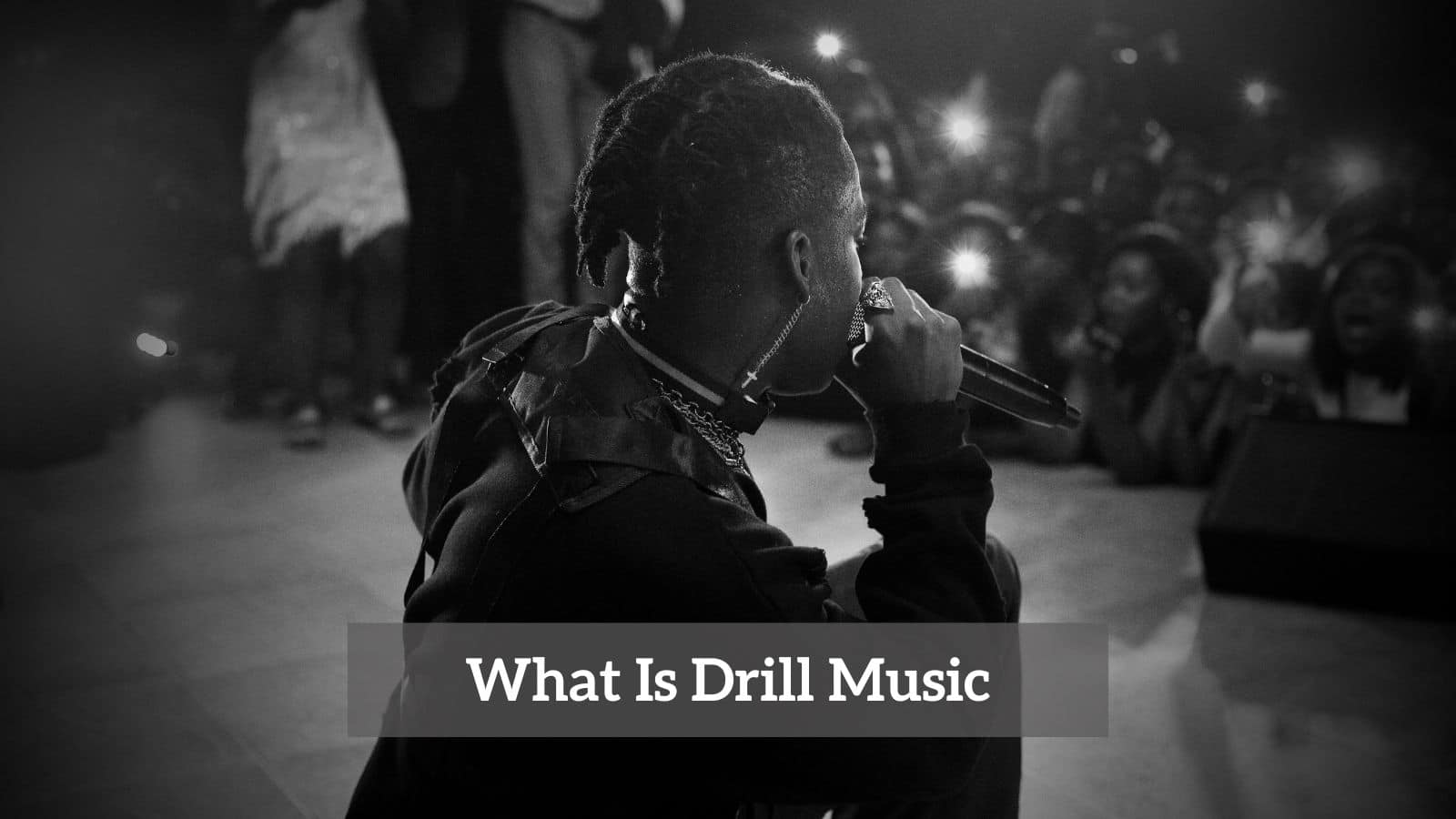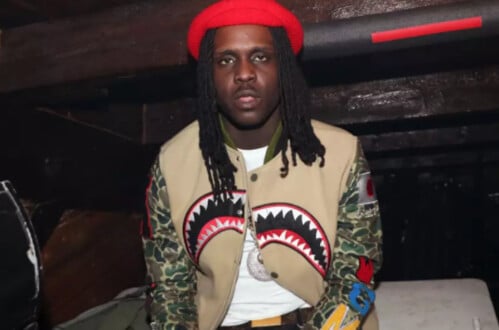
Drill music is a subgenre of hip-hop influenced by trap music which emerged in Atlanta, Georgia. We must warn you; drill music focuses on the dangers of criminal activity and puts a spotlight on the plight of people affected by this.
Drill music features violent imagery and explicit lyrics that may disturb sensitive viewers and listeners.
The drill scene was mostly underground mixtapes which started to appear in the mainstream in the mid-2010s due to singles such as Chief Keef’s I Don’t Like in 2012.
Chicago drill soon spread beyond the borders of Chicago to other major cities like New York, known as Brooklyn drill. The UK, the Netherlands, and Australia are also successful outlets for drill music.
What Is Drill Music
Origins of Drill Music
As of 2023, drill music is around thirteen years old, but a lot has happened in the intervening years since then.
The story of drill music begins in the 2010s. The sound of Atlanta’s trap music started seeping into the fabric of Chicago hip-hop. Drill music was influenced by the culture of the environment where it started—Chicago’s South Side neighborhoods.
To narrow it down more, ‘Dro City,’ as Chicago’s (Chi-Town) Woodlawn community refers to a specific area, impacted the narrative and core sound of drill music. Notable trap artists who influenced the sound and direction of drill music include Gucci Mane and Waka Flocka Flame.
PacMan, a rapper and native from Dro City, is credited to be the first artist to have referred to shooting as ‘drill.’ His single, It’s a Drill, from 2010, is regarded as the template for the sound of drill music. Unfortunately, the same year, PacMan’s life was cut short by violence.
Chief Keef rose to prominence when he was signed to the major label Interscope. In 2013 he joined musician King Louie on Kanye West’s album Yeezus alongside other drill rappers like G Herbo, Lil Durk, Lil Reese, and the late Fredo Santana.
Drill music’s prominence started to wane, and in 2014 Interscope dropped Chief Keef from their roster, but he remained active despite this. But drill didn’t die altogether. In South London’s neighborhoods, like Brixton, drill rose to prominence.
London’s drill scene was influenced by Chicago drill music, and electronic music genres such as grime influenced London’s drill scene. Due to British drill, it became prevalent on the charts in 2015, leading to scenes in Australia and Ireland too.
What Characteristics Define Drill Music?
The draining atmosphere drill artists experience in their environment leads artists to deliver their lyrics in an almost monotonous, deadpan style that is emotionally restrained. Auto-tune, an influence from trap music, is often used to give the artist’s rapping an emotionless quality.
On the other hand, British and Brooklyn’s drill usually avoids auto-tuning in favor of more expressive deliveries.
The initial Chicago drill music stood out for the violent content and bare quality of its language. Usually, songs feature ominous subject matter, delivered through metaphors and wordplays that seem like an emotionally detached recollection or report on events.
Later Chicago drill artists expanded the focus of their songs, and in the UK, Brooklyn artists have always focused on a wide range of subject matter.
Young Chop, a Chicago drill producer, followed a template similar to trap music. Ear-catching melodies and bare-bones production are combined with bare-bones production and heavy use of Roland TR-808 drum machines, typically between 60 and 70 BPM.
Across the pond, Headie One focuses on melody and uses faster beats, as heard in Martina’s Sofa. Brooklyn drill features warmer production and booming delivery.
Notable Drill Artists
We’ll look at some notable drill artists and highlights from their respective oeuvres to better understand what drill music sounds like.
Chief Keef
Arguably one of the most important pioneers of Chicago drill music, but also the most overshadowed artist at the same time. From time to time, his music is overshadowed by legal troubles and disputes with other artists.
Still, his impact on the scene remains important—his ad-lib delivery and bitter lyrics set the tone for drill music that followed.
Highlights:
- I Don’t Like set the tone for drill music dealing with what he was experiencing on the streets of Chicago through uncomplicated nihilistic lyrics.
Shady
Male singers dominated drill; the girl group Pretty N Pink did not become a household drill name. However, Shady provided a blueprint for future Chicago drill videos—someone waving a gun as seen in Go On. To this day, it is used in memes.
Pop Smoke
Pop Smoke (1999–2020) was a leading figure in the Brooklyn drill scene, but his life and career were cut short by gun violence. His deep voice and smooth delivery set him apart from other drill artists.
Highlights:
- Welcome to the Party, a platinum single, was featured on his debut mixtape, Welcome to the Woo.
- Aim for the Moon was released posthumously in 2019.
Lil Bibby
Almost immediately after Lil Bibby dropped his mixtape in 2013, many media outlets dubbed him an artist with a bright future ahead of him.
He signed with RCA Records but stopped performing in 2017 to launch his record label, Grade A Records. Unlike Pop Smoke’s soothing deep voice, Lil Bibby has a raspy voice, and his delivery is energetic and punchy.
Highlights:
- Can’t Trust a Soul deals with Lil Bibby’s trust issues with life in the rough neighborhood and those he cannot trust since he’s become famous.
Lil Durk
Now for something completely different! Lil Durk went in the opposite direction of his contemporaries, and instead of angry raps conveying aggression, his music became more accessible and mainstream. Lil Durk brings a softer side to the modern Chicago drill scene.
Highlights
- Dis Ain’t What U Want brings a message of hope and convinces young people to do their best to escape their violence-ridden gang lives and make good choices about their lives.
- Hanging with Wolves discusses life on the streets and the pitfalls associated with that kind of life.
Conclusion
Drill music came from humble, yet tragic and violent events as a way to speak out about the hardships people are facing on a daily basis.
We cannot overstate the interconnectivity of the world we live in–from being a fringe style localized in a Chicago neighborhood to an international phenomenon.
Further Reading and Listening
A dive into the essential songs of drill summarized in 17 essential songs.

